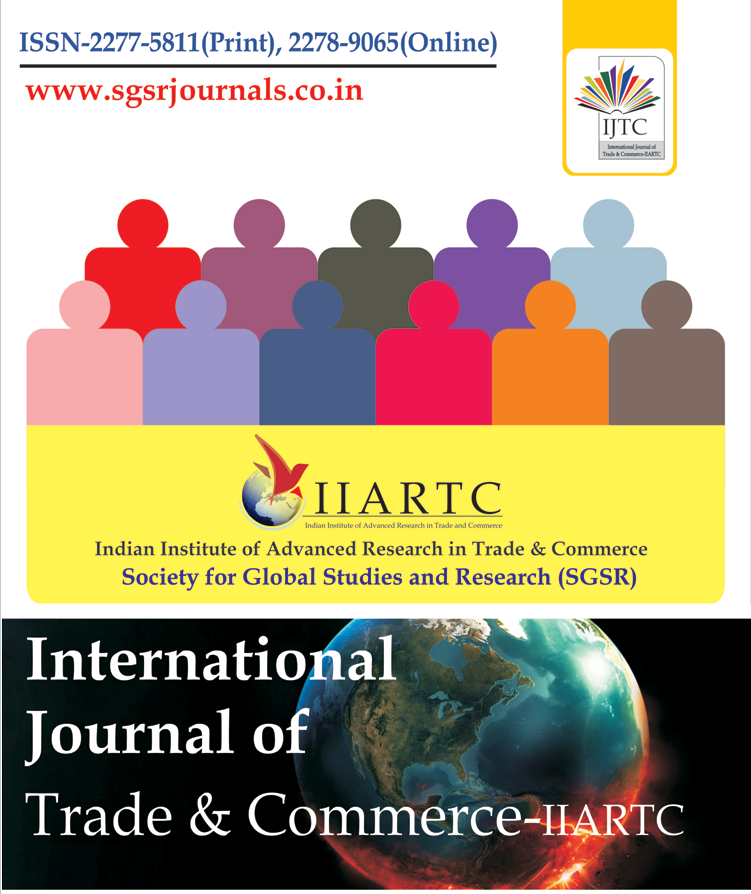Home ⇨ International Journal of Trade & Commerce-IIARTC

International Journal of Trade & Commerce-IIARTC
Impact Factor (IF):5.135 (COSMOS), IF:7.249 (ISRA), IF:3.721 (ISI)
ISSN:2277-5811 (P), ISSN:2278-9065 (O)
Frequency: Half Yearly
Arab-U.S. Migration: How Do Oil Prices Influence People Flows?
The Arab Gulf region is unique as compared to other parts of the World because its economic livelihood depends greatly on World price of a particular export good – oil. The standard migration model is clear on the influence. We hypothesize that exchange rates, commodity prices and geopolitical instability can affect international migration. If migrants send their earnings to home, then appreciation of the destination country’s currency will make remittances more valuable in the home country, raising the likelihood of migration. Higher commodity prices in the home country can, on the one hand, discourage migration because of improved labor market opportunities at home but on the other, encourage migration because greater prosperity makes relocation more affordable. Some parts of the World, for example the Middle East, have experienced considerable geopolitical instability, which may have induced greater levels of supply-push migration to more stable parts of the World. Our test case is the migration of persons from the Arab region to the USA during 1992-2004, a period characterized by volatility in Arab-U.S. exchange rates, oil prices and political conditions. We estimate a fixed effects model of the Arab emigration rate using a sample of 182 observations, which includes 14 countries (10 Arab and 4 others in a control group). One of our control variables is the real relative return to remittances, which is the ratio of the exchange rate-adjusted real wage in the USA to the exchange rate- adjusted real wage in the UK. Our econometric results demonstrate that: (i) Arab demand for U.S. visas is positively and significantly related to the real return to remitting, although the relationship is stronger for total visa demand than for employment visa demand; (ii) A one-dollar increase in the real price of oil from its mean will increase the flow of Arab migrants to the USA by over 505 persons; (iii) For every Arab who has migrated in the past, roughly 5 persons will follow him; and (iv) While the 9/11 terrorist attacks ceteris paribus stimulated migration, the 2003 Iraq-American war dampened it.
Author:Abbas S. Mehdi
Abstract:The Arab Gulf region is unique as compared to other parts of the World because its economic livelihood depends greatly on World price of a particular export good – oil. The standard migration model is clear on the influence. We hypothesize that exchange rates, commodity prices and geopolitical instability can affect international migration. If migrants send their earnings to home, then appreciation of the destination country’s currency will make remittances more valuable in the home country, raising the likelihood of migration. Higher commodity prices in the home country can, on the one hand, discourage migration because of improved labor market opportunities at home but on the other, encourage migration because greater prosperity makes relocation more affordable. Some parts of the World, for example the Middle East, have experienced considerable geopolitical instability, which may have induced greater levels of supply-push migration to more stable parts of the World. Our test case is the migration of persons from the Arab region to the USA during 1992-2004, a period characterized by volatility in Arab-U.S. exchange rates, oil prices and political conditions. We estimate a fixed effects model of the Arab emigration rate using a sample of 182 observations, which includes 14 countries (10 Arab and 4 others in a control group). One of our control variables is the real relative return to remittances, which is the ratio of the exchange rate-adjusted real wage in the USA to the exchange rate- adjusted real wage in the UK. Our econometric results demonstrate that: (i) Arab demand for U.S. visas is positively and significantly related to the real return to remitting, although the relationship is stronger for total visa demand than for employment visa demand; (ii) A one-dollar increase in the real price of oil from its mean will increase the flow of Arab migrants to the USA by over 505 persons; (iii) For every Arab who has migrated in the past, roughly 5 persons will follow him; and (iv) While the 9/11 terrorist attacks ceteris paribus stimulated migration, the 2003 Iraq-American war dampened it.




